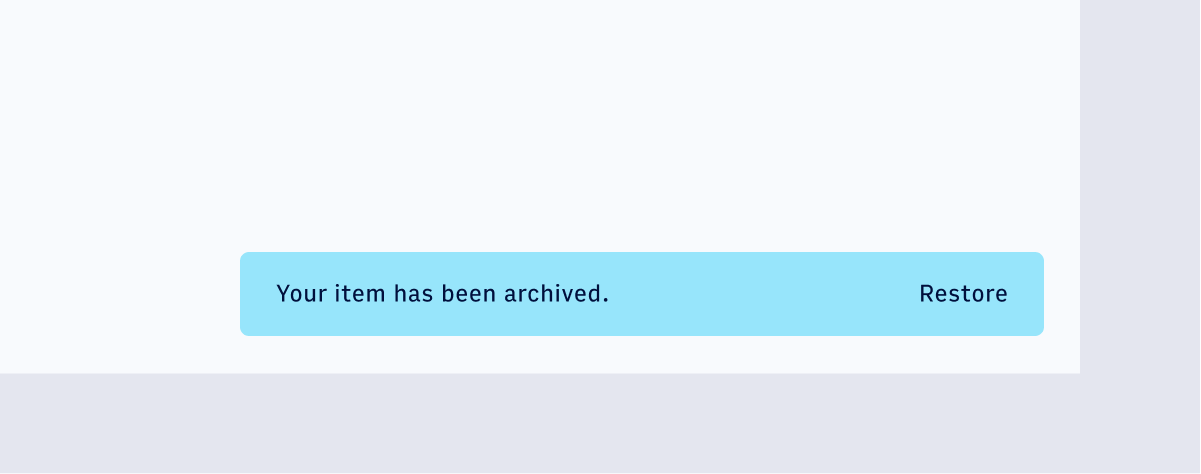Archiving
Archiving is the act of removing something from a current view to be organized and managed in a separate view, or an “archive”. It’s quite literally putting something (an image, a piece of meta data, content) in a deferred state where it’s not needed now but might be referenced or restored at a later point in time.
#How is this different from deleting?
In most cases, items that can be user created will often be paired with the ability to delete. Whether or not an archive function should be included is dependent on the product and use cases determined by design.
#Our general recommendations are as follows:
- If the user expects to access an item in the future - Archive
- If the user isn’t sure whether or not they’ll need it - Both Archive and Delete
- If the user doesn’t care, or it’s easy to replicate and recreate - Delete
#Common attributes & component recommendations for archiving
#The ability to view and select an item to be archived:
- Table rows
- List items
- Content blocks
- Images
- Videos
#An explicit “Archive” action:


- Buttons
- Icon buttons
- Overflow menu item
- Text link
#User feedback when an item has been archived:

- Filter options
- Archive pages
#User access to archived items:
- Filter options
- Archive pages
#The ability to restore or reinstate an archived item:


- Button
- Icon buttons
- Overflow menu item
- Snackbar action
- Alert action
An archive view should not be radically different from the original state an item was in. For example, if the user archived a tag from a table - accessing the archive should be as simple as filtering the table by “Archived”. It’s important to keep archived items close and easily accessible to the originals, remember, we’re not deleting!
An important feature of an Archive is including the ability to restore or reinstate an item to its original state. Anything that has been moved to an archive should be paired with the ability to restore it (usually via the same means of archiving). In addition to restoring, it’s acceptable to also provide an option to permanently delete the item from the archive - though this is a very destructive action and should be carefully considered before implementing. Copyright 2021 Arc XP




